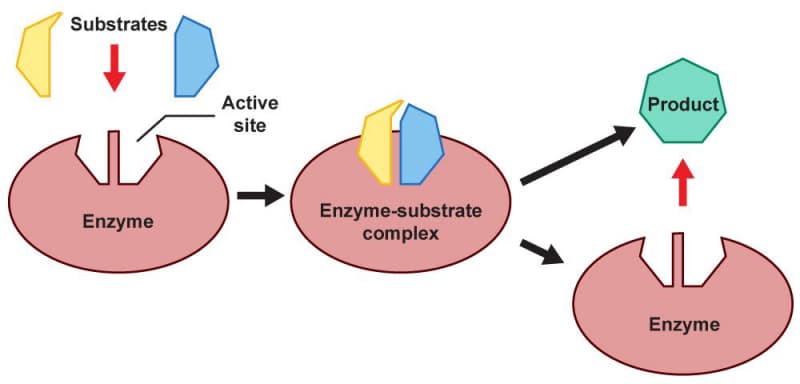Chemical reactions are the basis on which all life is based. Enzymes are proteins that speed up chemical reactions in organisms. Without enzymes, many reactions that are crucial to cell function and other life processes would occur much slower or not at all. There are many kinds of enzymes, and each is specific to the reaction that it facilitates. The structure of the enzyme is critical to how they function and what reactions they support. For a chemical reaction to occur, the shape and charge of the substrate must be compatible with the active site of the enzyme. In this guide, we will review the importance of enzyme structure, how enzymes support chemical reactions, and environmental factors that influence enzyme function.
Structure
The primary feature of an enzyme is the active site. The active site of an enzyme is the specific region that binds to and interacts with the substrate molecule(s). The rest of the enzyme offers support by upholding the active site’s shape and function. Active sites are tailored specifically to the target substrate, both in shape and chemical properties. This specificity ensures that enzymes only catalyze certain reactions in the cell.

Figure 3.01: Generalized structure of an enzyme with substrates, active site, and product.













